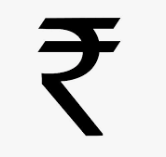The Indian rupee has been on a downward spiral, and today it hit a record low of 81.26 against the US dollar. The rupee is down nearly 6 per cent since January this year.
Union Finance Minister, Nirmala Sitharaman, recently said that the rupee is relatively better-placed than other global currencies against the greenback.
The value of the Indian rupee to the US Dollar works on a demand and supply basis. If there is a higher demand for the US Dollar, the value of the Indian rupee depreciates, and vice-versa. If a country’s import is more than it’s export then this kind of condition takes place. The rupee’s fall these days is mainly due to high crude oil prices, a strong dollar overseas, and foreign capital outflows. As money flows out of India, the rupee-dollar exchange rate gets impacted, depreciating the rupee.
How does a weak rupee impact you and the economy?
Since India mostly depends on imports (including crude oil, metals, electronics to name a few), the country makes payments in US dollars. Now if the rupee is weak, it has to pay more for the same quantity of items. In such cases, the cost of raw materials and production goes up which gets passed on to the consumers.The falling rupee’s biggest impact is on inflation. The global crude prices have sustained at over $100 a barrel since Russia’s invasion of Ukraine in February this year. High oil prices and a weaker rupee will only add to inflationary pressures in the economy.
Last week, RBI Deputy Governor, Michael D Patra, intervened and said, “We will stand for its stability and we are doing it. We are there in the market and we will not allow disorderly movement of the rupee. We have no level in mind, but we will not allow jerky movement. That is for certain.”
Depreciation in the rupee does not only affect your foreign travel. It can also pinch your pocket with higher fuel prices, higher interest rates on your loans, and so on. If the rupee continues to depreciate, then to cover the economy, the RBI increases its repo rate due to which a common man’s loan interest increases. It also results in increase in petrol prices. For example, if a taxi driver purchases petrol for ₹115 per litre one day, then after the rupee depreciates further,
he might get the same quantity of petrol for ₹120 per litre.
Article written by Shivansh Agrahari on behalf of the SNHS Student Website Team.

